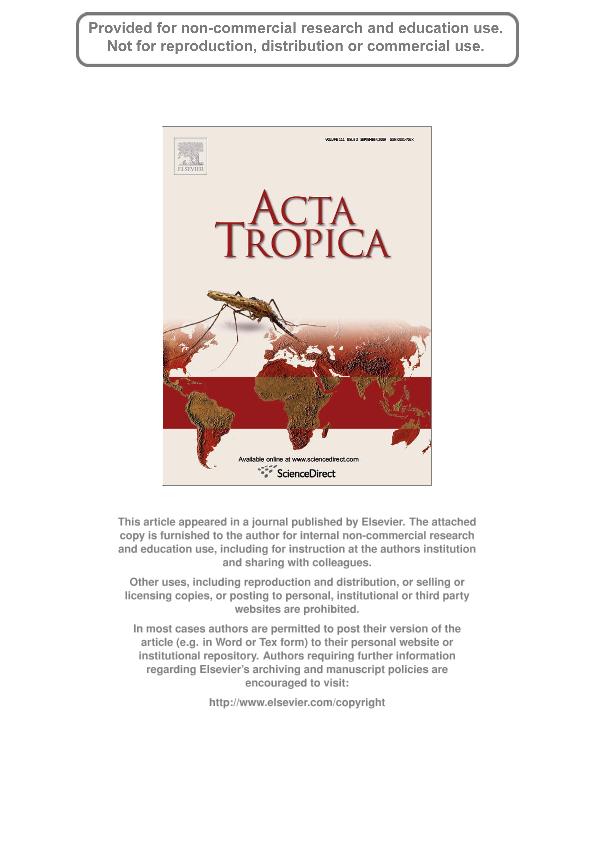Artículo
Ecology of Amblyomma neumanni (Acari: Ixodidae)
Fecha de publicación:
09/2009
Editorial:
Elsevier Science
Revista:
Acta Tropica
ISSN:
0001-706X
Idioma:
Inglés
Tipo de recurso:
Artículo publicado
Clasificación temática:
Resumen
The life cycle of Amblyomma neumanni was described studying the seasonal distribution of free-living stages and parasitic phases during two consecutive years. Development periods of engorged ticks under different photoperiod conditions were recorded. Larvae of A. neumanni have the peak of abundance in autumn. Nymphs reach the peak in winter. Females were collected on cattle from autumn to late spring.The seasonal distribution pattern of females showed a bimodal curve, with a peak in autumn and other during early and middle spring. The engorged females exposed at shortest photoperiod regimen (10 h light–14 h dark) under both laboratory and field conditions undergo morphogenetic diapause, expressed as a delay in the oviposition. It is concluded that females of A. neumanni that feed and copulate in autumn undergo morphogenetic diapause, and they will lay eggs in spring, simultaneously with the females that feed and copulate in this season. Climate niche analysis shows that adequate suitability for A. neumanni depends mainly from temperature (mean, absolute maximum and minimum, and mean temperature in wettest and driest quarters) as well as from rainfall in warmest and coldest quarters. Sequences of 16S rDNA gene belonging to different populations of A. neumanni, showed no intraspecific genetic differentiation.
Palabras clave:
Amblyomma neumanni
,
Seasonality
,
Life cycle
,
Distribution
,
Genetic variation
Archivos asociados
Licencia
Identificadores
Colecciones
Articulos(CCT - SANTA FE)
Articulos de CTRO.CIENTIFICO TECNOL.CONICET - SANTA FE
Articulos de CTRO.CIENTIFICO TECNOL.CONICET - SANTA FE
Citación
Nava, Santiago; Estrada-Peña, Agustín; Mangold, Atilio Jose; Guglielmone, Alberto Alejandro; Ecology of Amblyomma neumanni (Acari: Ixodidae); Elsevier Science; Acta Tropica; 111; 3; 9-2009; 226-236
Compartir
Altmétricas




